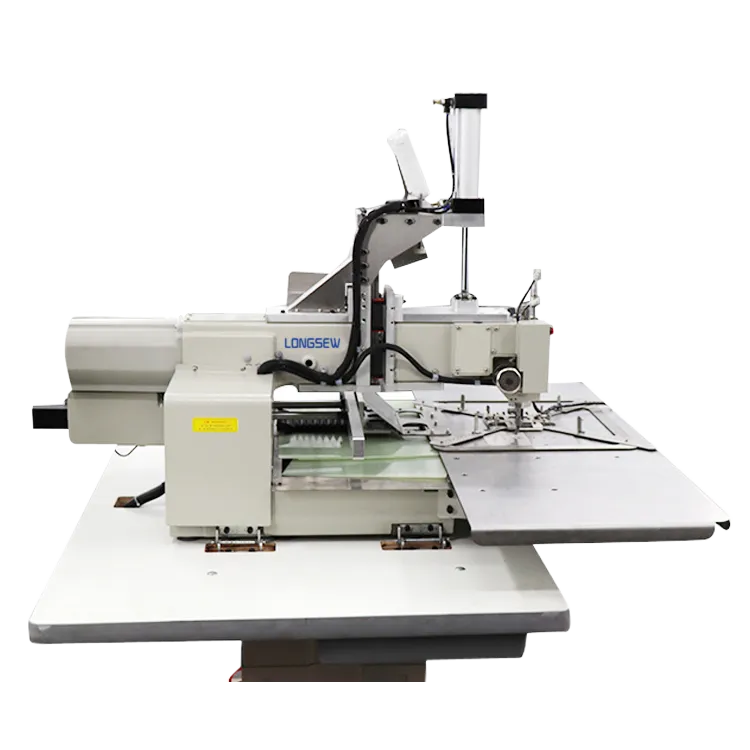Sewing Machines Designed for the Automotive Industry and Their Unique Features
The Evolution and Importance of Automotive Sewing Machines
In the ever-evolving automotive industry, the significance of precision engineering and high-quality craftsmanship cannot be overstated. One obscure yet indispensable tool that plays a pivotal role in this realm is the automotive sewing machine. These specialized sewing machines are not merely sewing tools; they are technological marvels engineered to meet the specific demands of vehicle manufacturing, particularly in the production of seat covers, interiors, and other fabric components.
The Basics of Automotive Sewing Machines
Automotive sewing machines are designed to handle thicker materials that are common in automotive upholstery, such as leather, synthetic fabrics, and heavy-duty textiles. Unlike standard sewing machines, these machines often come equipped with powerful motors to handle the robust materials and multiple layers found in automotive applications. Their stitching capabilities allow them to produce intricate designs and patterns, essential for creating aesthetically pleasing and functional automotive interiors.
Historical Context
The history of automotive sewing machines can be traced back to the early 20th century when the automobile industry began to flourish. Initially, these manufacturers relied on manual labor for upholstery work, which was time-consuming and inconsistent. With technological advancements, the introduction of specialized sewing machines revolutionized the process. Companies began to realize that investing in specialized equipment could streamline production, reduce labor costs, and enhance the quality of their products.
By the mid-20th century, automotive sewing machines had become integral to the manufacturing process, evolving alongside automotive designs and consumer demands. The push for innovation led to the development of advanced features such as programmable sewing patterns, automatic thread cutters, and enhanced safety mechanisms, making sewing operations more efficient and reliable.
Technological Innovations
automotive sewing machine

Modern automotive sewing machines incorporate cutting-edge technology, such as computerized systems and robotics, which makes them capable of performing complex sewing tasks with minimal human intervention. Features such as automatic fabric feeders, tension control systems, and touch-screen interfaces significantly enhance user flexibility and machine accuracy.
Moreover, these machines can produce a variety of stitch types, including zigzag, double-needle, and decorative stitches, providing automotive manufacturers with the needed versatility to meet diverse design requirements. The integration of CAD (Computer-Aided Design) software into the manufacturing process allows for precise pattern creation and modification, further ensuring consistency across production runs.
Environmental Considerations
As sustainability has become a critical issue in the automotive sector, manufacturers are beginning to implement more eco-friendly practices. There is a growing emphasis on using textiles made from recycled materials, and automotive sewing machines are adapting accordingly. High-efficiency sewing machines are being developed to minimize waste during the cutting and stitching processes, reflecting the industry’s commitment to reducing its environmental footprint.
Quality Control and Standards
Quality assurance is paramount in the automotive industry, as any defect in upholstery could significantly affect consumer satisfaction and safety. Advanced automotive sewing machines come equipped with features that allow for real-time monitoring of stitching quality and consistency. Additionally, rigorous testing protocols ensure that every batch of fabric passes through stringent quality checks before it is integrated into a vehicle’s interior.
Conclusion
In summary, automotive sewing machines are a critical element in the production of high-quality vehicle interiors. Their evolution from manual labor to advanced machinery illustrates the broader trends of the automotive industry toward efficiency, precision, and sustainability. As manufacturers continue to innovate and adapt to changing consumer preferences, the importance of automotive sewing machines is likely to grow, further cementing their role in shaping the future of automotive design and production. With ongoing advancements in technology and a commitment to environmental responsibility, the world of automotive sewing continues to thrive, ensuring that it remains a vital part of the automotive landscape for years to come.
-
Heavy Duty Leather Sewing Machine: A Must-Have for Professional LeatherworkNewsMay.28,2025
-
Leather Sewing Machine: Essential for High-Quality LeathercraftNewsMay.28,2025
-
Extra Heavy Duty Sewing Machine for Premium Leather ApplicationsNewsMay.28,2025
-
Walking Foot Cylinder Arm Sewing Machine: Precision and Power CombinedNewsMay.28,2025
-
Industrial Cylinder Arm Sewing Machine: Engineered for High-Performance StitchingNewsMay.28,2025
-
Cylinder Bed Sewing Machine: A Powerful Solution for Precision StitchingNewsMay.28,2025
-
Zigzag Sewing MachineNewsMay.12,2025





























